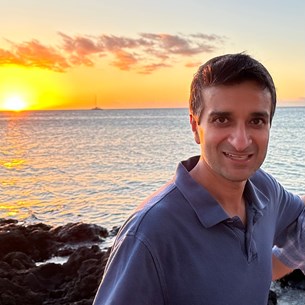Meeting
2019 ASCO Annual Meeting

University of California, San Diego, Moores Cancer Center, San Diego, CA
Sandip Pravin Patel , Megan Othus , Young Kwang Chae , Frank Giles , Jourdain Hayward , Christine McLeod , Helen X. Chen , Elad Sharon , Edward Mayerson , Christopher W. Ryan , Melissa Plets , Charles David Blanke , Razelle Kurzrock
Background: Immune checkpoint blockade, in particular anti-CTLA-4 and anti-PD-1-directed approaches, have improved outcomes in various tumor types. However, little is known about the efficacy of these agents in advanced rare solid tumors. We sought to investigate the activity of ipilimumab and nivolumab in previously unstudied rare solid tumors, with planned biomarker evaluation pending including whole exome sequencing, RNAseq, and multiplex immune profiling via the NCI CIMACs. Methods: We performed a prospective, open-label, multicenter phase II clinical trial of ipilimumab (1mg/kg iv q6weeks) plus nivolumab (240mg iv q2weeks) across 37 cohorts of rare tumors. Eligible patients had incurable rare cancer, defined histologically with an incidence of less than 6 in 100,000 per year, and did not have an approved or standard therapy available that had been shown to prolong overall survival. Patients were required to be 18 years of age or older, have a Zubrod performance status of 0-2, with absolute neutrophil count ≥ 1,000/mcL, platelets ≥ 75,000/mcL, hemoglobin ≥ 8 g/dL, creatinine clearance ≥ 50 mL/min, total bilirubin ≤ 2.0 x institutional upper limit of normal (IULN), AST and ALT ≤ 3.0 x IULN, TSH or free T4 serum ≤ IULN, and normal adrenocorticotropic hormone (ACTH) ≤ IULN. The primary endpoint was overall response rate (ORR) by RECIST v1.1 (complete (CR) and partial responses (PR)); secondary endpoints included progression-free (PFS) and, overall survival (OS), stable disease (SD) ≥ 6 months, and toxicity. The primary objective of this Phase II trial was to evaluate the overall response rate (ORR, confirmed complete and partial responses [CR and PR]) by RECIST v1.1. Our objective was to distinguish between a true ORR 15% (null hypothesis) versus 30% (alternative hypothesis). A Simon’s two-stage design was used, which required an analysis on the first 6 eligible patients who received therapy. If 1 or more of the 6 patients had a response (confirmed CR or PR), an additional 10 patients were to be accrued. The study was activated on 1/13/17 with the first patient treated on 3/1/17. The trial is currently open at 862 sites across the NCTN (with 352 sites having enrolled patients) and 554 patients enrolled to date. Clinical trial information: NCT02834013
Disclaimer
This material on this page is ©2024 American Society of Clinical Oncology, all rights reserved. Licensing available upon request. For more information, please contact licensing@asco.org
2019 ASCO Annual Meeting
Poster Session
Developmental Immunotherapy and Tumor Immunobiology
Developmental Therapeutics—Immunotherapy
Immune Checkpoint Inhibitors
NCT02834013
J Clin Oncol 37, 2019 (suppl; abstr TPS2658)
10.1200/JCO.2019.37.15_suppl.TPS2658
TPS2658
295a
Abstract Disclosures
2023 ASCO Annual Meeting
First Author: Young Kwang Chae
2024 ASCO Genitourinary Cancers Symposium
First Author: Connor Wells
2023 ASCO Gastrointestinal Cancers Symposium
First Author: Alice Markussen
2023 ASCO Annual Meeting
First Author: Sandip Pravin Patel